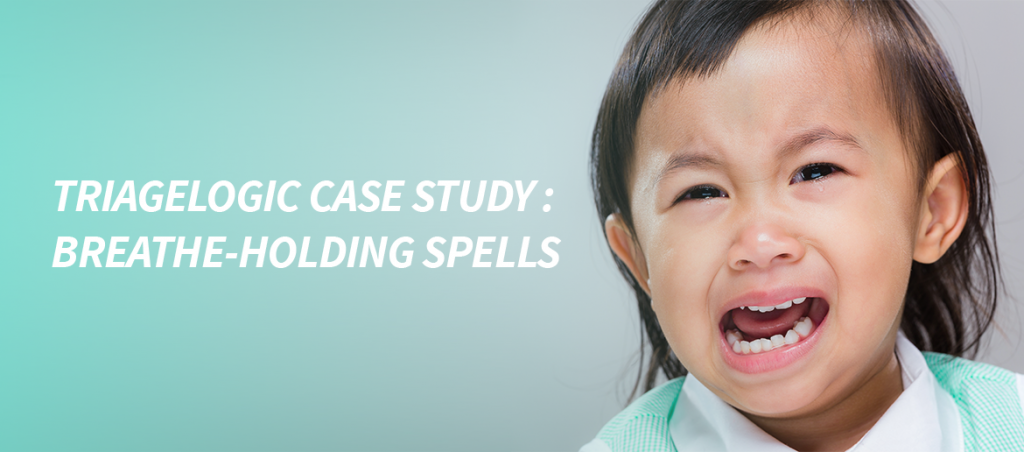TriageLogic Case Study : Breath-Holding Spells
A TriageLogic nurse recently answered a call from a very anxious mother of a 2-year-old. This mother told the nurse she was in a department store, getting ready to have family pictures done and her 2-year-old was having a temper tantrum and started crying because she couldn’t have an ice cream cone. The crying got louder as the child got more upset each time the mom said “no” to her request for a sweet treat. Then, suddenly the crying stopped.
The mother looked over to see what had calmed the child and noticed that she looked bluish around the lips and was laying on the ground not moving or breathing. This was a first for both mother and child. The mother instantly picked the child up, began to hug her and talked to her. Just as panic started to set in, the child began breathing again and was back to her normal self immediately. The entire episode lasted about 30-60 seconds. Once the mother got home, she called nurse triage to see if she needed to have the child seen in the emergency room or make an appointment with her pediatrician.
After more serious causes, such as a seizure or choking on a foreign body, were ruled out, the nurse realized this was a great opportunity to offer reassurance and relieve this parent’s anxiety.
Though this is not a common issue that triage nurses get calls for daily, it is still critical to know how to handle this situation. Often times, the parent will be greatly distressed and concerned for their precious child’s health. Following the protocols, a triage nurse is able to alleviate some of that parent’s anxiety by determining it was only a breath-holding spell.
What is it : Breath-holding spells are an involuntary reflex, meaning they are not intentional as many people think. Although scary for the parent, they are harmless and do not cause any lasting problems.
Who is at risk : Breath-holding spells can happen in healthy children between 6 months and 6 years old. However, they are most common around 2 years of age. Having a family history of these spells is an added risk factor.
Types :
Cyanotic breath-holding spells happen when a child stops breathing and turns blue in the face. These spells are often triggered by something that upsets the child, like being disciplined.
Pallid breath-holding spells are less common and more unpredictable because they happen after a child has gotten a sudden fright or startle. These kids turn very pale, almost white, during the spell.
Symptoms : Symptoms may include fainting (usually less than one minute), muscle twitching, and changes in skin color. The child’s skin may turn red or blue-purple especially around the lips.
How is it diagnosed : A triage nurse can usually diagnose harmless breath-holding spells based on what happens prior to and during a spell. These episodes should always be mentioned to the child’s pediatrician. Further testing may be recommended if the pediatrician feels that the child may have another disorder, such as seizures or iron deficiency anemia.
Complications : While these spells may be frustrating for parents, they do not cause lasting harm.
Treatment : Most children do not need treatment for breath-holding spells. Spells will go away as the child gets older. The parent must tell the child’s doctor if they start to have spells more often or if they seem worse or different than before.
Did you know ? Breath Holding spells occur in about 5% of normal children.





